When we heard that the October meeting would feature a talk about public telephone boxes we thought we knew what to expect. Every nerd and anorak for miles around would come to sample the esoteric delights of a really obscure and boring subject whilst our members would stay away in droves. So what happened? Our members flocked in by the thousand (well 86 of them) and Nigel Linge gave a fascinating talk which held us for the best part of an hour.
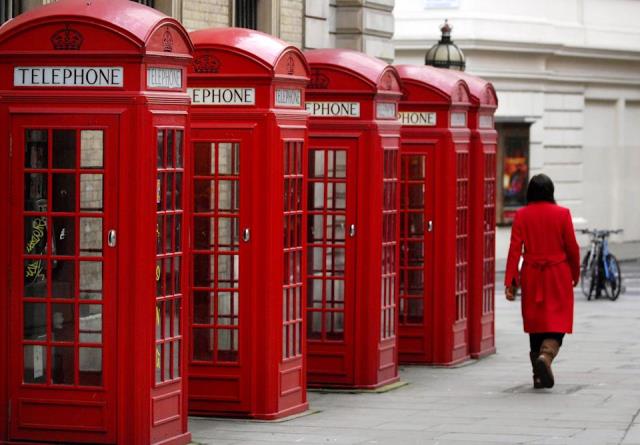
To begin with, there was no doubt who was going to give the talk. The only man in the room with a pale blue pullover emblazoned with a very large red telephone box. Nigel’s mum was determined that her boy should be noticed and with her craftsmanship she achieved her aim. She didn’t make it clear whether her design represented a K3 or a K7 but did it matter? The object was to highlight the fascinating history of the simple red box and in this her son succeeded magnificently, helped in no small measure by his mum’s pullover.

In 1911 all local councils transferred their responsibility for telephones to the Post Office (except for Hull which remains independent to this day.) This allowed standardisation to take place across the newly formed company and in 1913 plans for a standard telephone box were drawn up. The First World War intervened and it was not until 1921 that the K1 was introduced with windows down to the floor. (The ‘K’ stands for kiosk.) An immediate problem was that many London boroughs refused to install this design and this essentially killed it off. A competition was organised and it was then that Giles Gilbert Scott was chosen to make a new design. He was the third generation of well known architects and it might have been considered that a telephone box design was somewhat infra dig but he tackled the project with enthusiasm and the result was the iconic K2 box. Made of cast iron with a teak door the roof design was inspired by Sir John Sloane’s memorial in St Pancras churchyard.
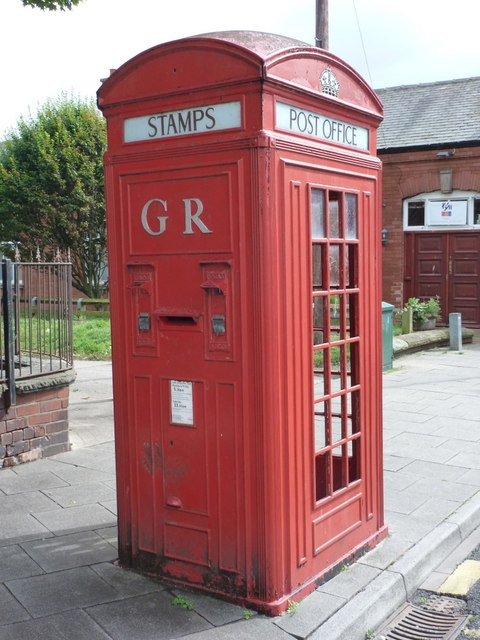 Various models followed but they were created to satisfy niche requirements. K3 was a cheaper version made of concrete. K4 (right) combined with a post box and a stamp machine but this was too large and it obstructed the pavement. Only 50 were made. K5 was a flat pack, again with little demand. In 1936 the K6 was introduced to mark the Jubilee of George V, various crowns were introduced into the design and experiments were made with various colours. A grey/red combination or a green one for Areas of Outstanding Natural Beauty. This box was popular and became a new standard. Other organisations created their own networks - the police, the AA, the RAC.
Various models followed but they were created to satisfy niche requirements. K3 was a cheaper version made of concrete. K4 (right) combined with a post box and a stamp machine but this was too large and it obstructed the pavement. Only 50 were made. K5 was a flat pack, again with little demand. In 1936 the K6 was introduced to mark the Jubilee of George V, various crowns were introduced into the design and experiments were made with various colours. A grey/red combination or a green one for Areas of Outstanding Natural Beauty. This box was popular and became a new standard. Other organisations created their own networks - the police, the AA, the RAC.
After World War Two there were more design experiments but the pace of change slowed down. Only six of the K7 model of 1962 were ever made but K8 with its all-glass panels was more of a marker for modernity. 11,000 of these were installed but few are left whilst the venerable K2 goes on and on.
However, the industry was beginning to change. Money was no longer sufficient (remember Button B?). From 1990 payment by card came in, first with special phone cards but only later with credit and debit cards. There were experiments with providing internet access but that soon petered it as internet use expanded very rapidly. Advertising was encouraged in order to help pay some of the costs of providing the network but the kiss of death came with the advent of the mobile phone. At first these weren’t very mobile; portable or perhaps even luggable would have been a better description, but these soon evolved until virtually everyone had one.
So who needed a phone box? The number declined dramatically. In 1999 there were 150,000 working boxes. By 2013 there were 58,000. There are still places where the boxes are maintained as a public service, particularly mountain areas where the coverage for mobile phones is either poor or non-existent. A number have been listed as features of historic significance. But these are very few in number relative to the thousands that once populated our landscape. Many have been sold off as iconic symbols of British culture but the most interesting uses are ideas thought up by local communities in many cases. BT will sell the kiosks for as little as one pound to a community if they have a good use for it and will undertake to maintain it. A popular use is to install defibrillators but others are in use as coffee shops, information centres, libraries, food banks and even art galleries. The list is limited only by people’s imaginations. Good to see that there is still a healthy future for one of the most iconic symbols of British culture.
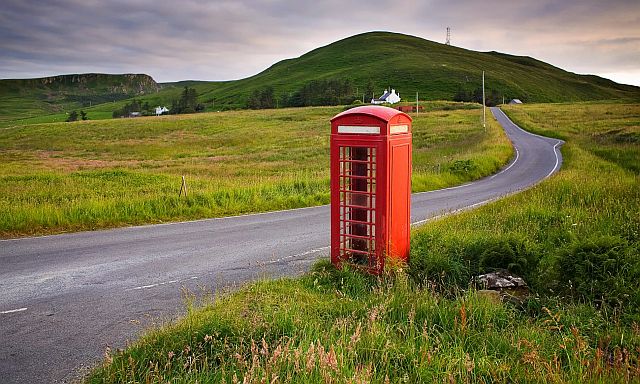
A lonely Scottish phonebox
Thanks to Nigel who made such a potentially unprepossessing subject into a fascinating talk. He has other subjects he could talk about such as submarine cables. What would be the design for his pullover for that talk?
Neil Mullineux, October 2022
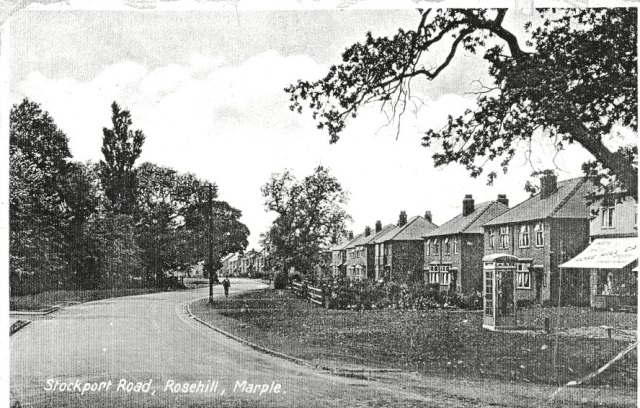
both boxes appear to be of the K2 variety
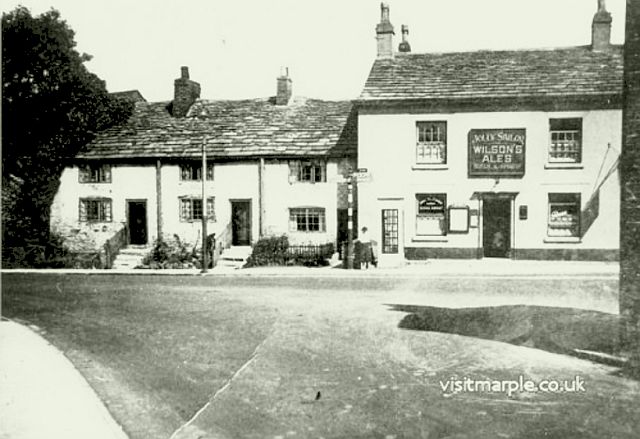
The lost K6 on Church Lane, the gone & was views
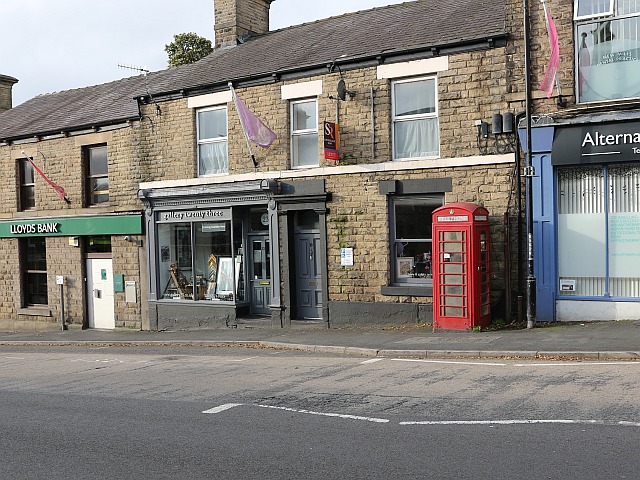 Union Road, New Mills
Union Road, New Mills
click the image to see the K6 phone box High Street, New Mills
Very early mobile phone prototype (1946)
Dave and Dusty - Phone Box (1949)
Dave and Dusty (1946-1949) is a series of short British films chronicling the friendship between a young boy and his shaggy dog. The two friends get into trouble and have various adventures, meeting a host of colourful characters along the way.
Police call boxes introduced in Manchester (1928)
The box, situated near the Ben Brierley public house on Moston Lane, was constructed in 1928. The earliest known UK police box was opened in Sunderland in 1923. The police box was a regular site in the days before home telephone use was common. The boxes gave the public a means to contact the police, fire or ambulance service in cases of emergency and allowed officers on patrol to contact their base. They also acted as mini police stations, allowing officers the chance to grab a brief respite from the weather and even the oppurtunity to eat one of sandwiches often carried in their tunics or helmets
The Making of Information Age: Enfield Telephone Exchange
This film explores the story of the Enfield telephone exchange and the role of female operators in the development of telephone networks. The Enfield exchange was one of the last to be converted from manual to automatic switching. After closure, the Science Museum preserved a section of the switchboard which is now on display in the new Information Age gallery along with stories of the women who worked on the exchange. Information Age tells the story of how our lives have been transformed by information and communication technologies over the last 200 years. Visit https://www.sciencemuseum.org.uk/see-and-do/information-age.

